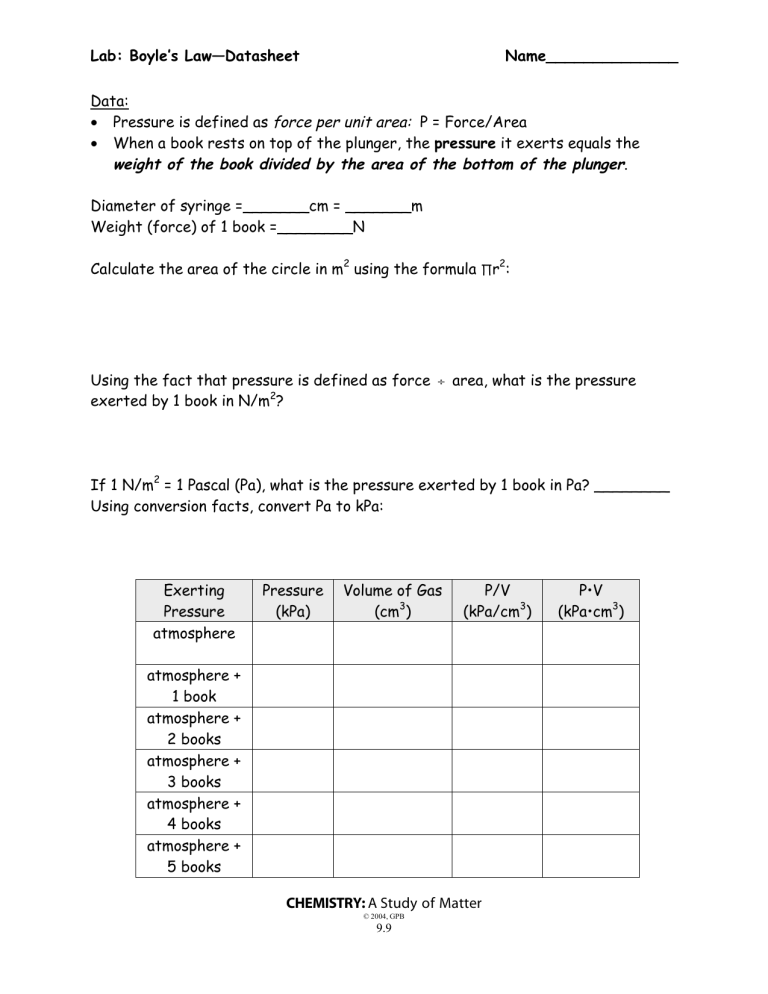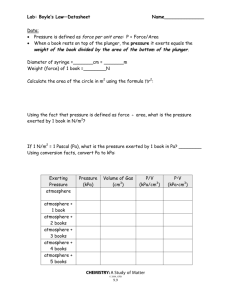9-09,10 Boyle's Law lab
advertisement

Lab: Boyle’s Law—Datasheet Name______________ Data: • Pressure is defined as force per unit area: P = Force/Area • When a book rests on top of the plunger, the pressure it exerts equals the weight of the book divided by the area of the bottom of the plunger. Diameter of syringe =_______cm = _______m Weight (force) of 1 book =________N Calculate the area of the circle in m2 using the formula ∏r2: Using the fact that pressure is defined as force ÷ area, what is the pressure exerted by 1 book in N/m2? If 1 N/m2 = 1 Pascal (Pa), what is the pressure exerted by 1 book in Pa? ________ Using conversion facts, convert Pa to kPa: Exerting Pressure atmosphere Pressure (kPa) Volume of Gas (cm3) P/V (kPa/cm3) atmosphere + 1 book atmosphere + 2 books atmosphere + 3 books atmosphere + 4 books atmosphere + 5 books CHEMISTRY: A Study of Matter © 2004, GPB 9.9 P•V (kPa•cm3) Use the graph paper below to make a graph of “pressure vs. volume”. Use proper technique for scientific graphing and be sure to draw a best-fit line. Conclusions: As the pressure exerted on the air inside the syringe increased, the volume (increased, decreased). Volume and pressure are (directly, inversely) proportional. Look at the last two columns of your data table. Within bounds of experimental error, the relationship between pressure and volume of a gas is (P/V = k , P•V = k). This relationship is known as __________________ ________________. (Look at the title of this lab!) CHEMISTRY: A Study of Matter © 2004, GPB 9.10

